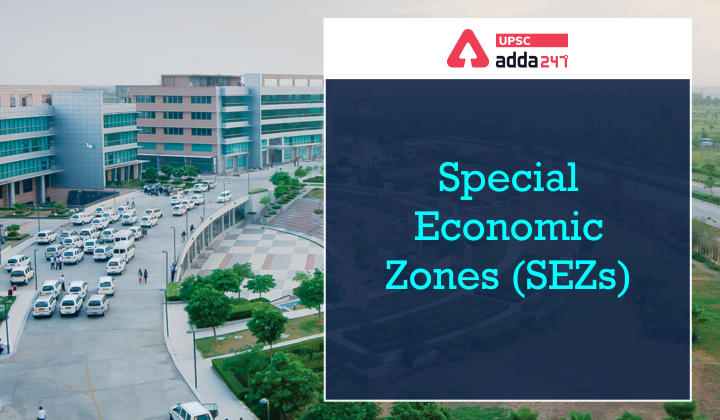Table of Contents
Special Economic Zones in India- Relevance for UPSC Exam
- GS Paper 3: Indian Economy- Issues relating to planning, mobilization of resources, growth, development and employment; Investment models.
Special Economic Zones in India- Context
- The union government is considering a proposal to allow producers in Special Economic Zones (SEZs) to sell their output to the domestic market without treating them as imports.
- The government is also reviewing the exclusion of export-oriented units (EOUs) and SEZs from the recently notified tax refund scheme for exports.
International Day of Clean Air For Blue Skies
Special Economic Zones– Key Points
- About Special Economic Zone (SEZ): It is an area within a country’s national borders in which the business and trade laws are different from the rest of the country.
- Key Purpose: SEZs are established for different purposes like increasing trade balance (by promoting export), employment, increased investment, job creation and effective administration.
- The SEZs are expected to be engines for economic growth.
- Relaxation offered by the government in SEZs: government formulates various financial policies to encourage businesses to set up in the SEZs. These policies are typically related to investing, taxation, trading, quotas, customs, and labour regulations.
- In the initial period, the government often offers tax holidays (a period of lower taxation).
- The government also ensures the ease of doing business in these areas.
National Centre for Disease Control (NCDC)
Special Economic Zones in India
- Origin:
- Asia’s first EPZ (Export Processing Zones) was established in 1965 at Kandla, Gujarat.
- SEZs are similar in structure to EPZs.
- Indian SEZs are modeled on the success of Chines SEZs.
- The government began to establish SEZs in 2000 under the Foreign Trade Policy to redress the infrastructural and bureaucratic challenges that were seen to have limited the success of EPZs.
- Legislative backing: The Special Economic Zones Act was passed in 2005 to provide legislative support to SEZs. The Act came into force along with the SEZ Rules in 2006.
- SEZs Act 2005: “It is defined as an Act to provide for the establishment, development and management of the Special Economic Zones for the promotion of exports and for matters connected therewith or incidental thereto.”
- Between 2000-2006, SEZs were operational under the Foreign Trade Policy.
- Present status: 379 SEZs are notified by the government, out of which 265 are operational.
- Regional Distribution of SEZs in India: about 64% of the SEZs are located in five states- Tamil Nadu, Telangana, Karnataka, Andhra Pradesh and Maharashtra.
- Baba Kalyani Committee: It was constituted by the Ministry of Commerce and Industry to study the existing SEZ policy of India and had submitted its recommendations in November 2018.
Special Economic Zones in India- Key Objectives
- To create additional economic activity.
- To boost the export of goods and services.
- To generate employment.
- To boost domestic and foreign investments.
- To develop infrastructure facilities.




 TSPSC Group 1 Question Paper 2024, Downl...
TSPSC Group 1 Question Paper 2024, Downl...
 TSPSC Group 1 Answer key 2024 Out, Downl...
TSPSC Group 1 Answer key 2024 Out, Downl...
 UPSC Prelims 2024 Question Paper, Downlo...
UPSC Prelims 2024 Question Paper, Downlo...
